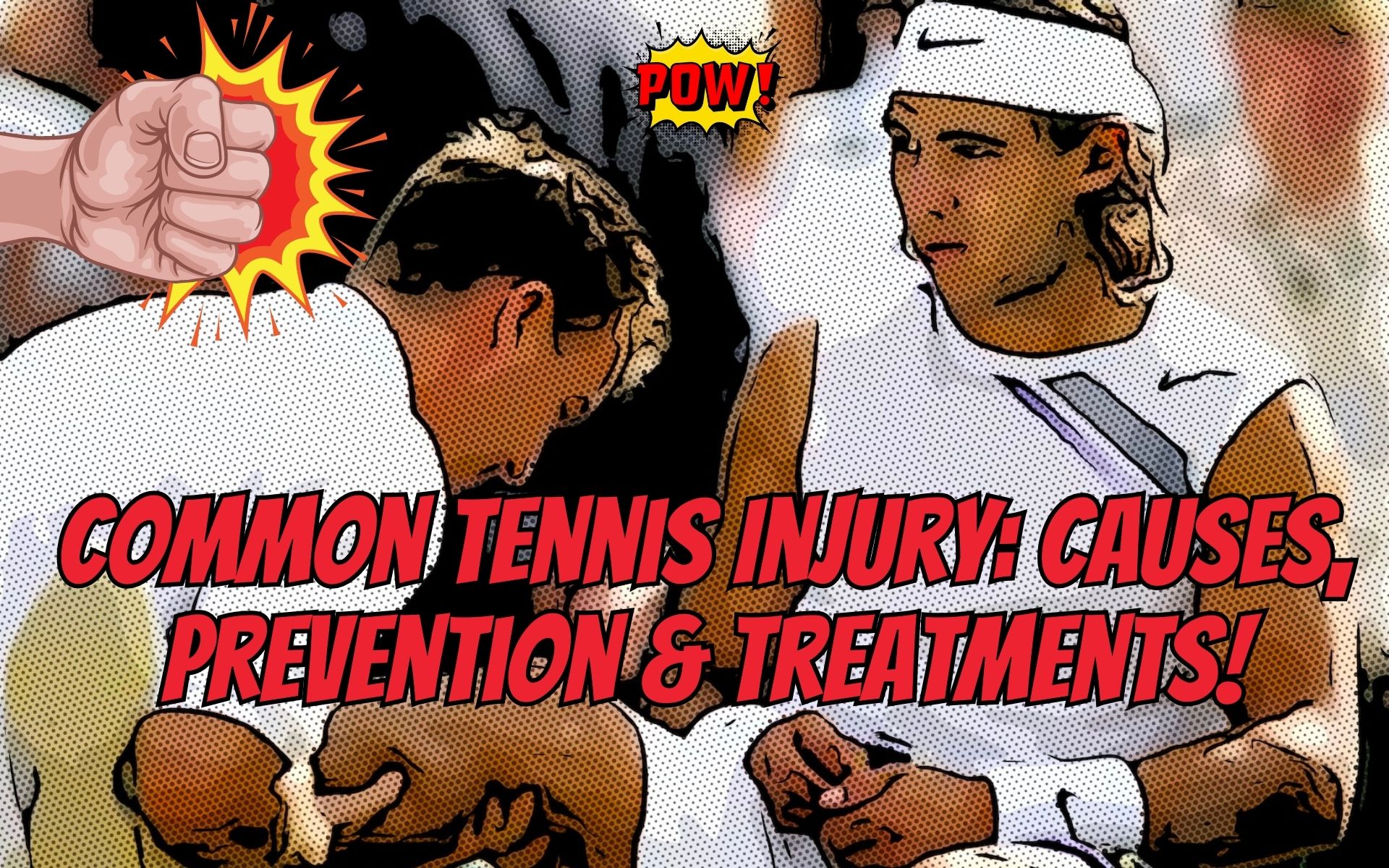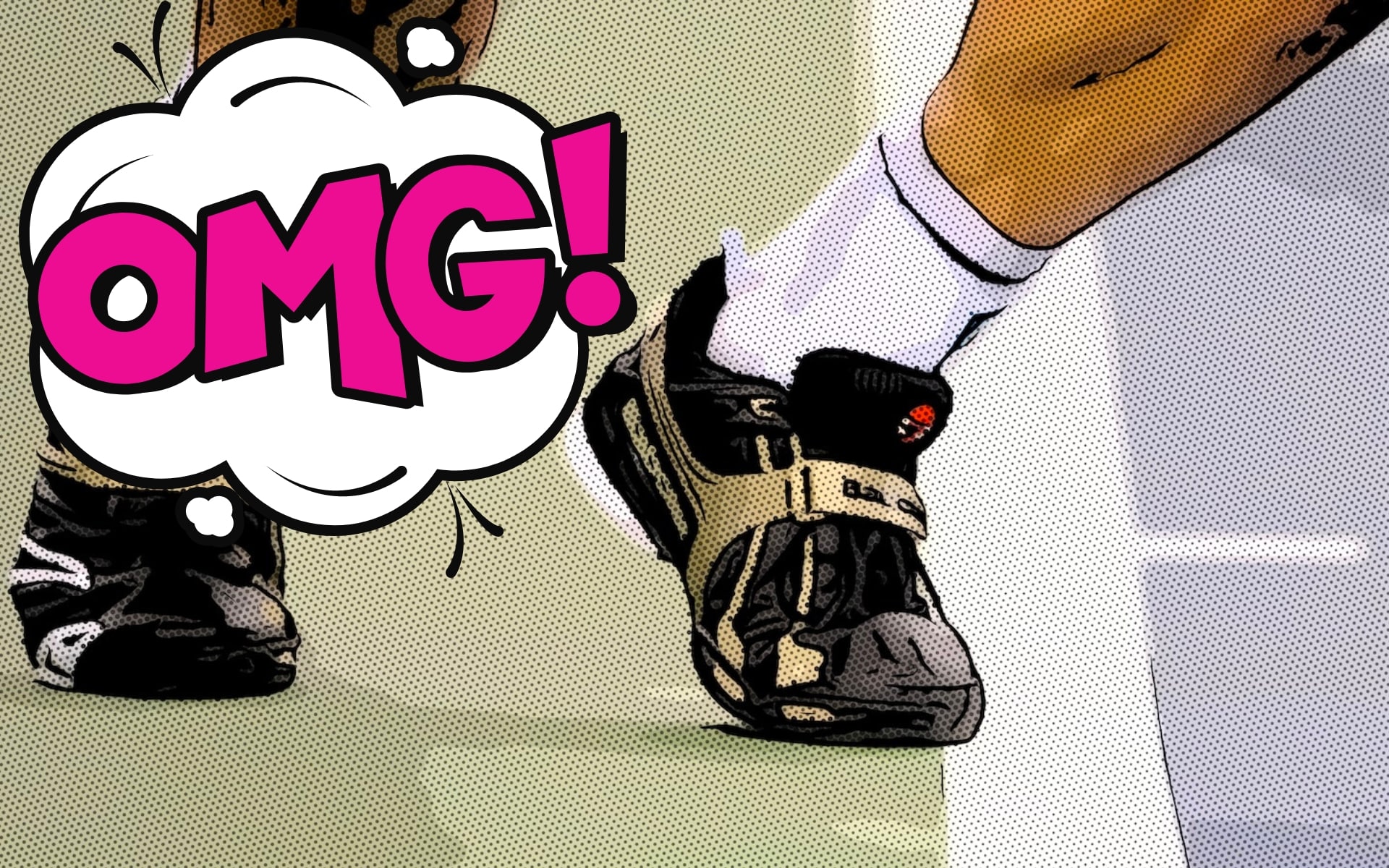Playing tennis is an exhilarating and rewarding experience, but the risk of injury is a genuine concern for players at all levels. Whether you’re a novice player or a seasoned professional, our comprehensive guide to tennis injury prevention will provide valuable insights on protecting yourself from common injuries and keeping your game running strong. In this guide, we’ll explore the most frequent tennis injuries, how they occur and offer practical strategies for staying healthy while playing tennis.
How Tennis-Related Injuries Occur
Tennis-related injuries typically occur due to a combination of factors such as overuse, lack of conditioning, improper technique, and inadequate warm-up.
Overuse injuries are common in tennis due to repetitive motions such as swinging the racquet or serving. These repetitive movements can strain muscles, tendons, and joints, leading to conditions like tennis elbow or shoulder impingement.
Lack of conditioning often leads to injuries as players who are not physically prepared for the demands of the game may experience muscle strains or sprains.
Improper technique can put undue stress on the body, particularly on the wrists, elbows, shoulders, and knees.
Lastly, inadequate warm-up and lack of proper stretching can leave the body unprepared for sudden movements and quick changes in direction, leading to injuries. Understanding these causes is the first step towards preventing tennis-related injuries.

The 5 Most Common Tennis Injuries:
1: Golfer’s Elbow
Golfer’s elbow… yes, Golfer’s… also known as medial epicondylitis, is an injury primarily suffered by Tennis players!
Causes of Golfer’s Elbow:
Golfer’s elbow is usually caused by overusing the muscles in your forearm that help you grip, rotate your arm, and flex your wrist. When you repetitively flex, grip, or swing, it can cause pulls or tiny tears in the tendons, leading to pain and inflammation. Surprisingly, this condition doesn’t just affect golfers. Any activities that involve repetitive arm or wrist motion can lead to golfer’s elbow.
Prevention of Golfer’s Elbow:
Preventing golfer’s elbow involves taking appropriate steps to reduce the stress on your tendons. This includes strengthening your forearm muscles, which can be achieved through specific exercises. Stretch your wrists and forearms before and after these exercises. Also, using proper equipment and technique, whether it’s in sporting activities or tasks at work, can help prevent injury. Lastly, don’t ignore pain. If you feel any discomfort in your elbow during an activity, stop and rest.
Treatment for Golfer’s Elbow:
The first step in treating golfer’s elbow is to allow your arm to rest and avoid any activities that cause pain. Applying ice to the area and using over-the-counter anti-inflammatory drugs can help reduce swelling and pain. Physical therapy and exercises can strengthen your forearm muscles and improve flexibility. In more severe cases, your doctor may recommend corticosteroid injections or surgery. Always consult a healthcare professional for accurate diagnosis and treatment.

2: Patellar Tendonitis
Patellar Tendonitis, also known as Jumper’s Knee, is a common injury among tennis players, resulting from the overstress on the patellar tendon.
Causes of Patellar Tendonitis:
Patellar Tendonitis is often a sport-related injury, resulting from constant jumping and landing involved in tennis, which can lead to microscopic tears in the knee tendon. These small tears, combined with the body’s inability to repair the tissue as fast as it’s being damaged, can lead to inflammation and pain in the knee region. It’s especially prevalent among players who have a sudden increase in training intensity or volume.
Prevention of Patellar Tendonitis:
Preventing Patellar Tendonitis involves a combination of adequate training, proper conditioning, and the use of appropriate equipment. A gradual increase in training intensity can help the body adapt to the physical demands of tennis. Strength training, especially of the leg muscles, can enhance support for the knee joint, reducing the chances of injury. Moreover, using shoes designed specifically for tennis, which provide good cushioning and stability, can help absorb the impact of continuous jumping and landing, thereby reducing stress on the knee.
Treatment of Patellar Tendonitis:
The initial treatment for Patellar Tendonitis typically involves Rest, Ice, Compression, and Elevation (RICE). Alongside this, over-the-counter anti-inflammatory medications may help to manage pain and inflammation. Physiotherapy, including specific stretching and strengthening exercises, can help improve the condition and prevent recurrence. In severe or persistent cases, other treatments like steroid injections, plasma-rich platelet (PRP) injections, or even surgery might be considered. Always consult a healthcare professional for individualised advice.

3: Ankle Sprains
Ankle injuries are common among tennis players due to the quick pivots and lateral movements involved in the game. It’s usually caused by an unnatural twisting of the ankle beyond its normal range of motion.
Causes of Ankle Sprains:
Ankle sprains typically result from an unnatural twisting of the ankle beyond its normal range of motion. This can happen when a player is moving quickly and loses balance, especially on slippery surfaces or uneven surfaces. Poorly fitting shoes with inadequate support also increase the risk of injury.
Prevention of Ankle Sprains:
Preventing ankle sprains starts with proper technique, which includes using quick footwork to stay out of awkward positions. Strengthening the ankle muscles through specific exercises can enhance stability and reduce the risk of injury. Moreover, wearing tennis shoes with good arch support that fit properly can help absorb the impact of sudden movements and provide better traction on slippery surfaces.
Treatment of Ankle Sprains:
If you experience an ankle sprain, immediate steps should be taken to reduce swelling and manage the pain. RICE (Rest, Ice, Compression, and Elevation) is a common first-line treatment for any injury. In addition to this, over-the-counter anti-inflammatory medications like ibuprofen may help to reduce discomfort and inflammation. Physiotherapy exercises may also be beneficial in improving ankle strength and stability, reducing the risk of recurring sprains. In severe or persistent cases, other treatments such as braces, steroid injections, or surgery might be considered. Always consult a healthcare professional for individualised advice.

4: Rotator Cuff Tears
Shoulder injuries such as rotator cuff tears are common injuries in tennis players due to the repetitive overhead movements involved in serving and hitting shots.
Causes of Rotator Cuff Tears:
Rotator cuff tears typically occur as a result of repetitive stress on the shoulder, particularly during overhead actions such as serving. The wear and tear associated with such repetitive movements can lead to small tears, which gradually increase in size, causing pain and weakness in the shoulder. An acute injury, like a fall, can also result in a rotator cuff tear.
Prevention of Rotator Cuff Tears:
Preventing rotator cuff injuries involves incorporating shoulder-strengthening exercises into your regular training routine. Using proper technique when serving and hitting overhead shots is also crucial. Regular rest periods to allow the shoulder muscles to recover can also reduce the risk of injury. Using a lighter tennis racket an also reduce the stress on your shoulder.
Treatment of Rotator Cuff Tears:
If a rotator cuff tear occurs, the immediate response should involve rest and ice to reduce inflammation and pain. Non-steroidal anti-inflammatory drugs (NSAIDs) may also be used to manage pain. Physiotherapy exercises focused on strengthening the shoulder muscles can improve mobility and function. In severe cases, treatments such as steroid injections or surgery may be necessary. Always consult a healthcare professional for individualised advice.

5: Back Stress Fractures
Back stress fractures, often occurring in the lower back, are a common issue among tennis players, largely due to the rotational stress placed on the spine during play.
Causes of Stress Fractures:
Back stress fractures are typically caused by repetitive twisting and turning motions, which place a lot of strain on the lower back. Overuse and poor technique can exacerbate this strain, contributing to the development of stress fractures over time. Sudden increases in training volume or intensity without adequate rest and recovery can also increase the risk of this type of injury.
Prevention of Stress Fractures:
Preventing back stress fractures involves practising good technique during play, particularly when twisting and turning. Including core strengthening exercises in your training routine can also provide additional support for the lower back, reducing the likelihood of injury. Moreover, ensuring adequate rest and recovery time between training sessions can help to prevent overuse injuries.
Treatment of Stress Fractures:
Treatment for back stress fractures usually includes rest and reduced activity levels to allow the body to heal. Over-the-counter pain relievers can be used to manage discomfort, and physical therapy exercises focused on strengthening the core and improving flexibility may also be beneficial. In some cases, wearing a back brace or undergoing surgery may be necessary. As always, it is important to consult a healthcare professional for individualised advice.
Practising good posture, particularly when sitting for long periods, can also help to protect the lower back. Regular stretching and strengthening exercises can also be beneficial in reducing the risk of injury. Furthermore, ensuring adequate rest and recovery between training sessions is essential for preventing overuse injuries. By taking these simple steps, it may be possible to reduce the likelihood of sustaining a back stress fracture.

Bonus Injury- Tennis Elbow: Causes, Prevention, and Treatment
Contrary to its name, tennis elbow, or lateral epicondylitis, is an injury commonly suffered by golfers. However, tennis players are not spared from this condition, which affects the tendons connecting the forearm to the outside of the elbow.
Causes of Tennis Elbow:
The cause of the golfer’s elbow is often linked to the overuse and strain of the forearm muscles and tendons, which can result in tiny tears in these tissues over time. This is commonly observed in tennis players, particularly those who execute consistent backhand strokes with poor form or technique. However, it’s not exclusively a tennis player’s ailment; it can occur in anyone who indulges in activities that involve repetitive arm, elbow, and wrist movements.
Prevention of Tennis Elbow:
Preventing tennis elbow involves a combination of proper technique, conditioning, and equipment. Proper technique is paramount, especially during the execution of backhand strokes. Consider working with a coach to ensure your movements are not causing undue stress on your forearm muscles. Strengthening forearm muscles through specific exercises can enhance their endurance and resistance to repetitive stress. Using the correct equipment also plays a role, as rackets with a smaller grip or strings with a lower tension can reduce the strain on your forearm muscles.
Treatment of Tennis Elbow:
If you’re unfortunate enough to develop tennis elbow, it’s crucial to take immediate steps to prevent further damage. Initial treatment often involves rest, ice, and over-the-counter pain relievers to reduce inflammation and discomfort.
For treating tennis elbow, rest is the first and foremost step. Cease from playing tennis and any other activities that put a strain on your elbow tendons.
Non-steroidal anti-inflammatory drugs (NSAIDs) can alleviate pain and reduce inflammation. In some cases, physical therapy and specific exercises may be prescribed to restore range of motion and gradually strengthen forearm muscles.
In extreme cases, corticosteroid injections or surgery may be required. The key to recovery, however, is patience; healing from tennis elbow may take several weeks to months.
Developing a Comprehensive Tennis Injury Prevention Plan
Preventing tennis injuries requires a comprehensive approach that considers various aspects: training, equipment, technique, recovery, and nutrition.
Balanced Training Regime
A well-rounded training programme is essential to prevent tennis injuries. This should include a mix of strength training, endurance exercises, and flexibility practices. Strength training should focus on both upper and lower body muscles, as well as the core. A strong core can enhance stability and balance, reducing the risk of falls and injuries. Flexibility exercises such as yoga or Pilates can improve your range of motion, making you less prone to muscle strains.
Proper Technique
Proper technique is key in any sport, and tennis is no exception. Working with a qualified coach can ensure that you are using the appropriate technique for each stroke, reducing strain on your body. Remember, even small adjustments can significantly decrease the risk of injury.
Adequate Equipment
Using the appropriate equipment is also important. This includes wearing proper footwear that offers good traction and stability and using a racket that matches your skill level and playing style. A racket that is too heavy or has too large a grip can increase your risk of tennis elbow.
Recovery Time
Sufficient rest and recovery are often overlooked but are crucial for preventing injuries. Your muscles need time to repair and strengthen after a strenuous workout. Aim for at least one rest day per week, and consider incorporating active recovery activities such as light jogging or swimming.
Nutrition
Proper nutrition also plays a critical role in injury prevention. A balanced diet rich in lean proteins, whole grains, fruits, vegetables, and healthy fats provides the nutrients your body needs to repair tissues and maintain strong bones and muscles.
Warm-Up and Cool-Down
Never underestimate the importance of warming up before and cooling down after a session. A good warm-up prepares your body for the activity ahead, gradually increasing your heart rate and loosening your muscles. Similarly, a cool-down helps your body to recover and reduces muscle stiffness and soreness.
Regular Health Checks
Finally, regular health checks and physiotherapy sessions can help identify any potential issues before they become serious. These checks can catch early signs of overuse or strain and allow you to make necessary changes to your training regime.
By incorporating these strategies into your tennis routine, you can significantly reduce your risk of injury and keep playing the sport you love. Remember, prevention is always better than cure!





